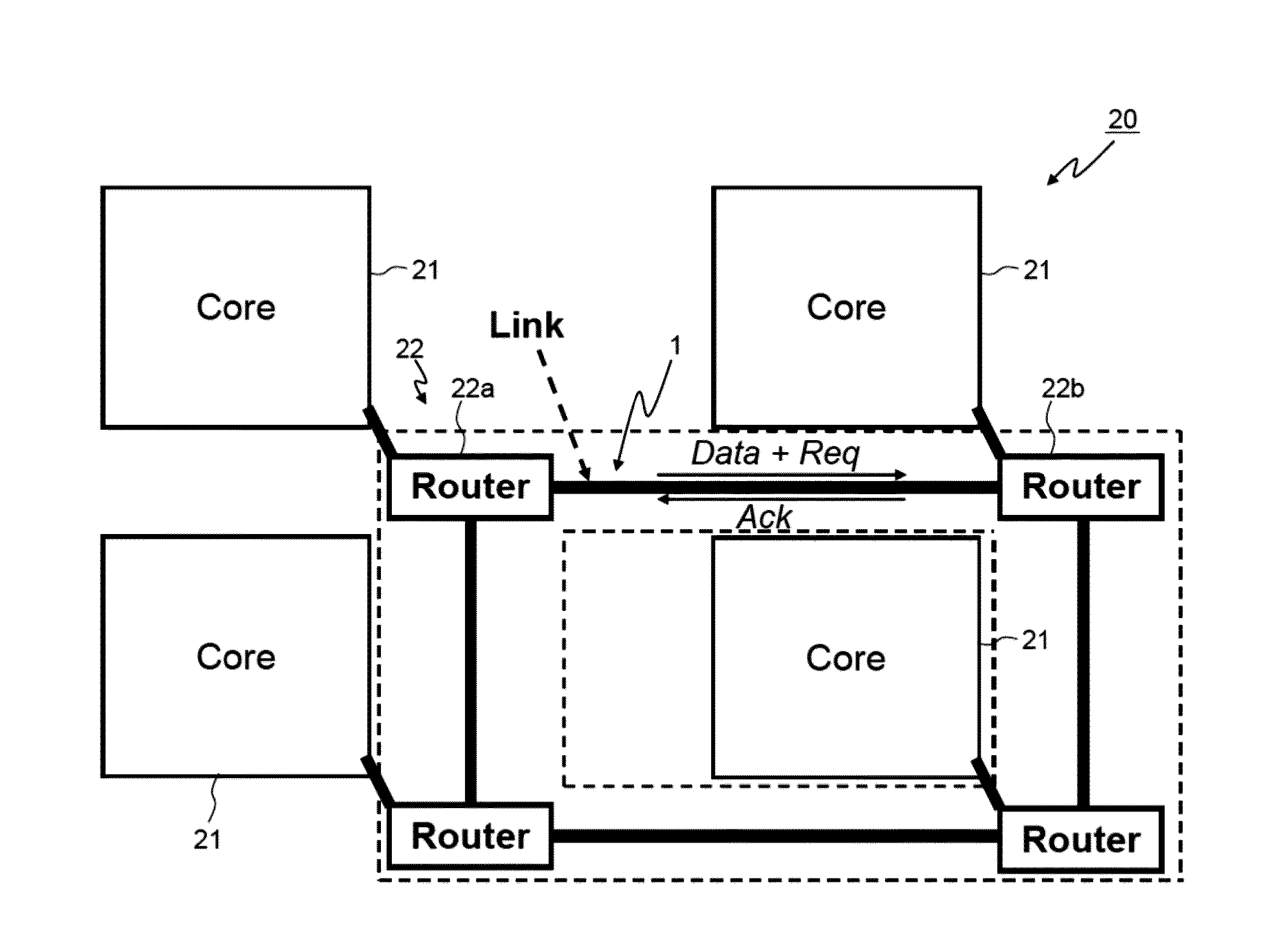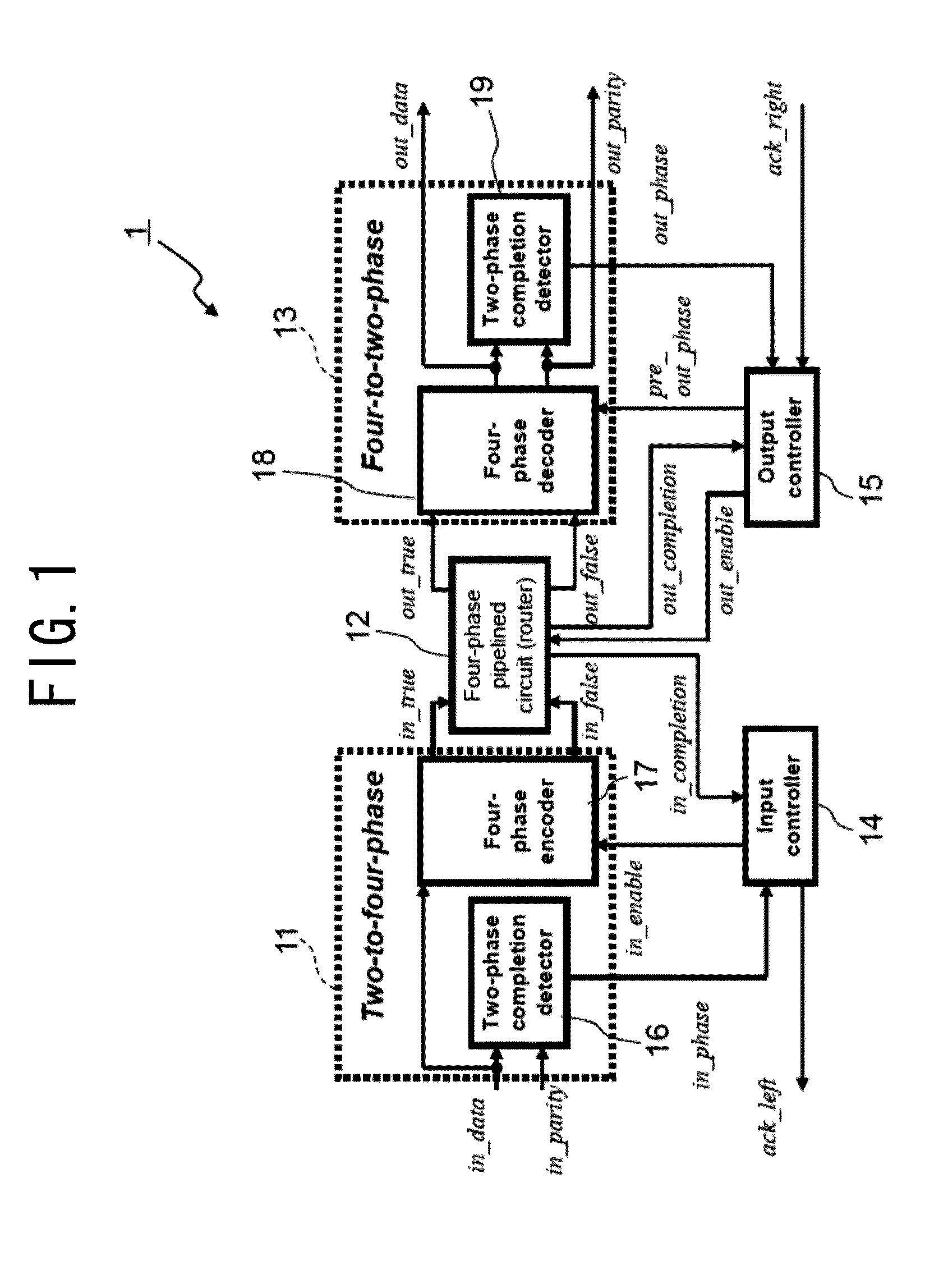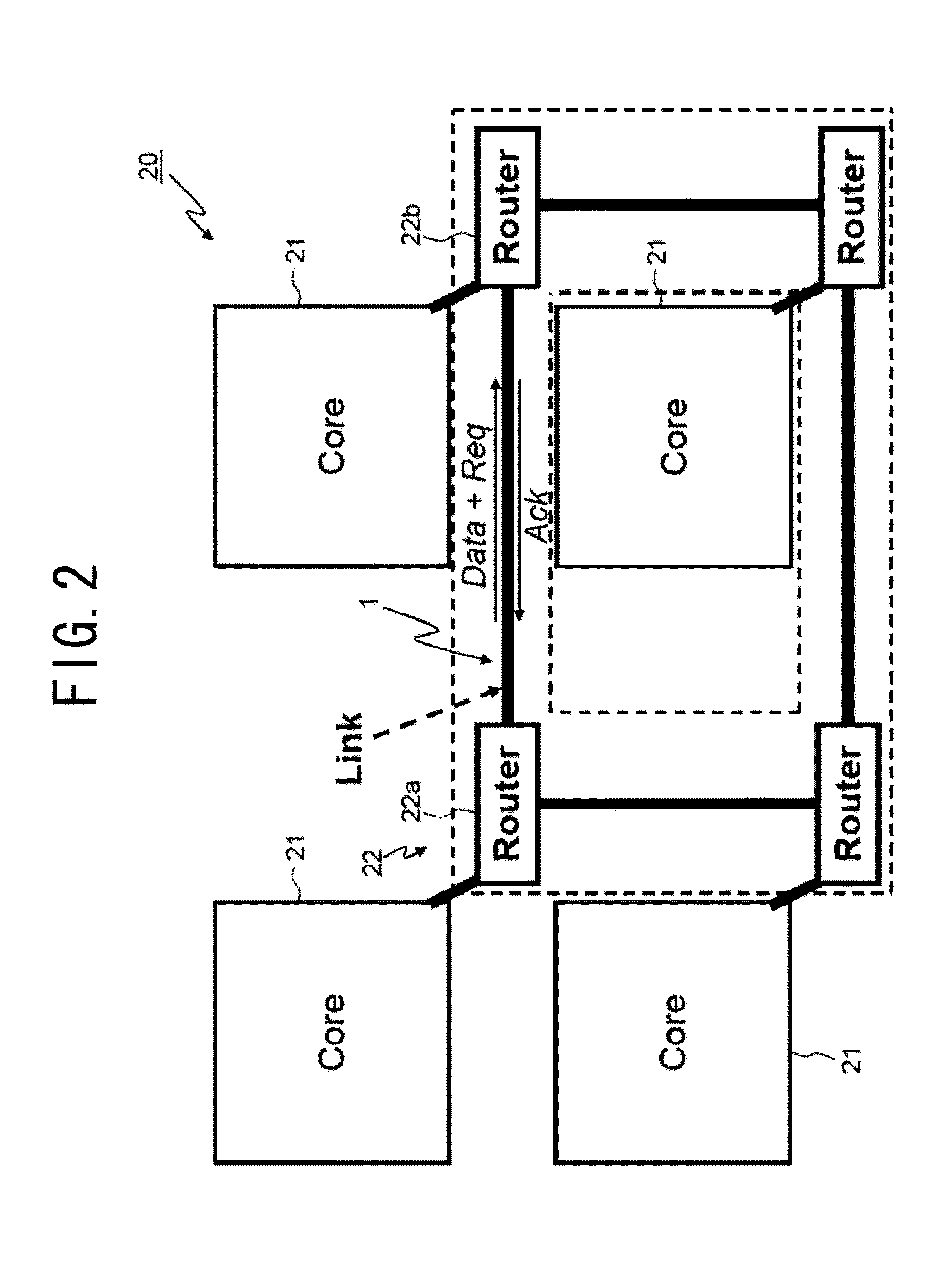Asynchronous protocol converter
a protocol converter and converter technology, applied in the direction of synchronous/start-stop systems, digital transmission, instruments, etc., can solve the problems of increased delay time, data transfer requires a long cycle time, and the design freedom of synchronous control is generally low, so as to achieve high-speed noc
- Summary
- Abstract
- Description
- Claims
- Application Information
AI Technical Summary
Benefits of technology
Problems solved by technology
Method used
Image
Examples
simulation example 1
[0241]Based on different number of pipeline registers, the asynchronous protocol converters 1 of the present invention and a comparative example were simulated. The asynchronous protocol converters of the present invention and the comparative example had 246 transistors and 217 transistors, respectively. Thus, the number of the transistors of the asynchronous protocol converter 1 of the present invention is 113% of that of the comparative example.
[0242]FIG. 17 shows the result of the simulation example 1, wherein (A) shows the relation between the number of pipeline registers and the throughput and (B) shows the relation between the number of the pipeline registers and the energy consumption. In FIGS. 17(A) and (B), the horizontal axis shows the number of the pipeline registers. In FIG. 17(A), the vertical axis shows the throughput. In FIG. 17(B), the vertical axis shows the energy consumption (fJ). The throughput is a data transfer rate (Gbps).
[0243]As shown in FIG. 17(A), the thro...
simulation example 2
[0246]The asynchronous protocol converter 1 of the present invention was inserted between the two 10 bit four-phase routers and the simulation for realizing the two-phase transfer was performed. In the comparative example, the four-phase transfer circuit based on the conventional four-phase method was simulated. The conventional four-phase transfer circuit uses the four-phase protocol only.
[0247]The reason why the comparative example uses the conventional four-phase method is that the conventional asynchronous protocol converter cannot be applied to a multiple input and a multiple output router.
[0248]The asynchronous protocol converter 1 of the present invention and the four-phase transfer circuit of the comparative example had 71355 transistors and 61818 transistors, respectively. Thus, the number of the transistors of the asynchronous protocol converter 1 of the present invention is 115% of that of the comparative example.
[0249]FIG. 18 shows the result of the simulation example 2,...
PUM
 Login to View More
Login to View More Abstract
Description
Claims
Application Information
 Login to View More
Login to View More - R&D
- Intellectual Property
- Life Sciences
- Materials
- Tech Scout
- Unparalleled Data Quality
- Higher Quality Content
- 60% Fewer Hallucinations
Browse by: Latest US Patents, China's latest patents, Technical Efficacy Thesaurus, Application Domain, Technology Topic, Popular Technical Reports.
© 2025 PatSnap. All rights reserved.Legal|Privacy policy|Modern Slavery Act Transparency Statement|Sitemap|About US| Contact US: help@patsnap.com



